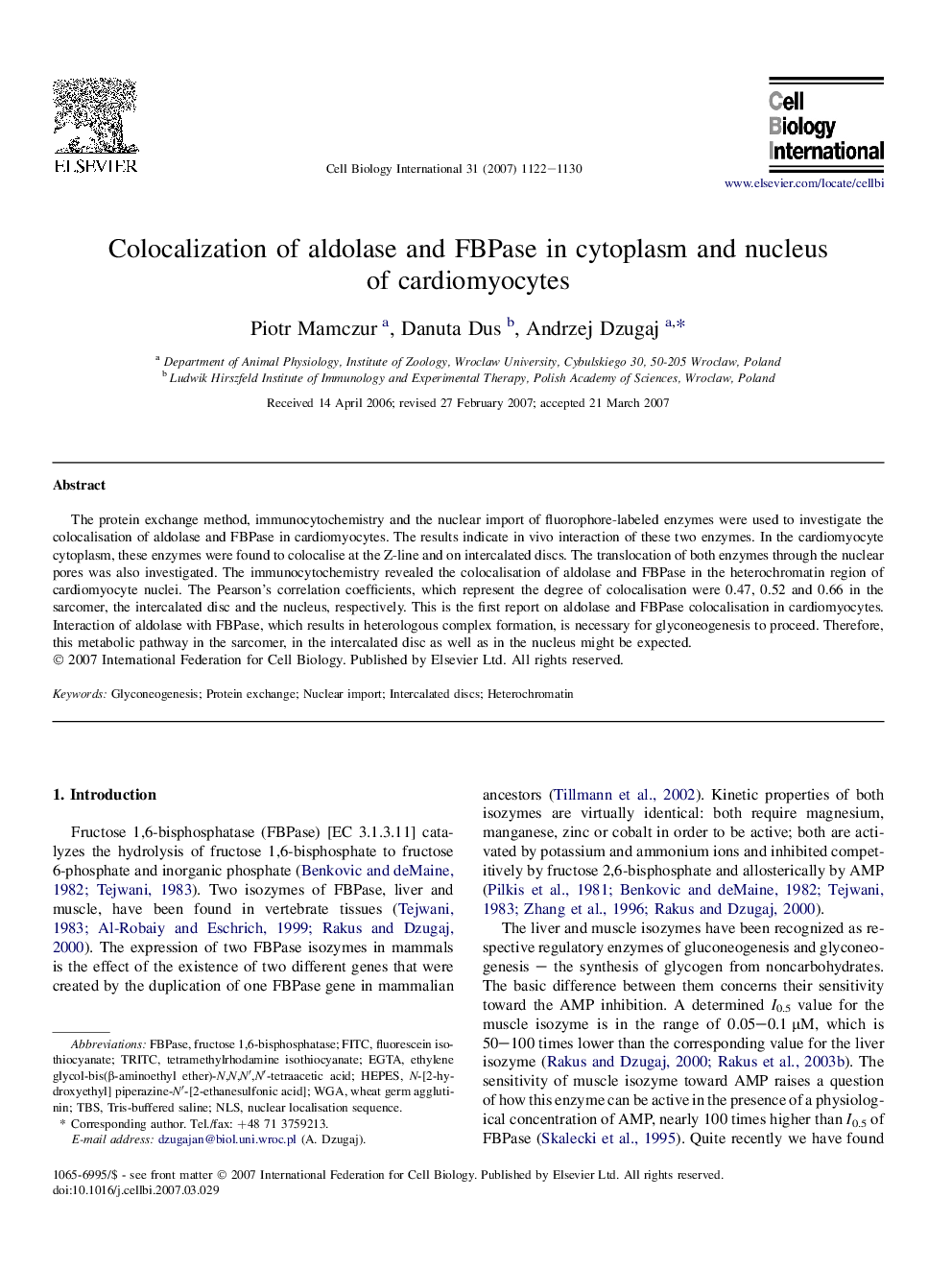| Article ID | Journal | Published Year | Pages | File Type |
|---|---|---|---|---|
| 2067622 | Cell Biology International | 2007 | 9 Pages |
Abstract
The protein exchange method, immunocytochemistry and the nuclear import of fluorophore-labeled enzymes were used to investigate the colocalisation of aldolase and FBPase in cardiomyocytes. The results indicate in vivo interaction of these two enzymes. In the cardiomyocyte cytoplasm, these enzymes were found to colocalise at the Z-line and on intercalated discs. The translocation of both enzymes through the nuclear pores was also investigated. The immunocytochemistry revealed the colocalisation of aldolase and FBPase in the heterochromatin region of cardiomyocyte nuclei. The Pearson's correlation coefficients, which represent the degree of colocalisation were 0.47, 0.52 and 0.66 in the sarcomer, the intercalated disc and the nucleus, respectively. This is the first report on aldolase and FBPase colocalisation in cardiomyocytes. Interaction of aldolase with FBPase, which results in heterologous complex formation, is necessary for glyconeogenesis to proceed. Therefore, this metabolic pathway in the sarcomer, in the intercalated disc as well as in the nucleus might be expected.
Keywords
HEPESIntercalated discsFBPaseN-[2-hydroxyethyl] piperazine-N′-[2-ethanesulfonic acid]WGATRITCNLSTBSEGTAFITCethylene glycol-bis(β-aminoethyl ether)-N,N,N′,N′-tetraacetic acidtetramethylrhodamine isothiocyanateTris-buffered salinenuclear localisation sequencefructose 1,6-bisphosphatasefluorescein isothiocyanateHeterochromatinNuclear importGlyconeogenesisWheat germ agglutinin
Related Topics
Life Sciences
Biochemistry, Genetics and Molecular Biology
Biophysics
Authors
Piotr Mamczur, Danuta Dus, Andrzej Dzugaj,
